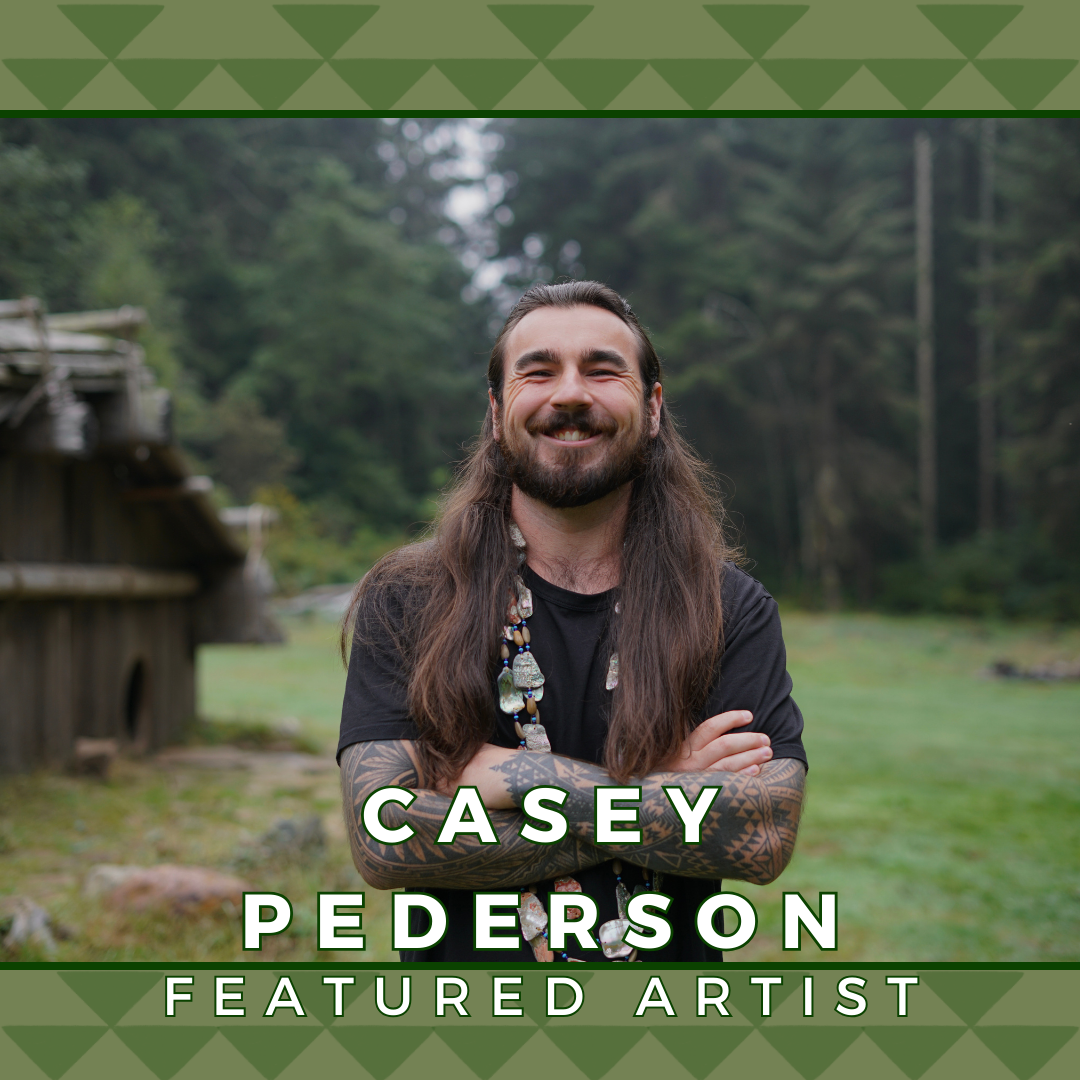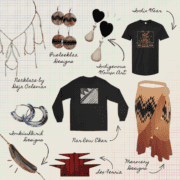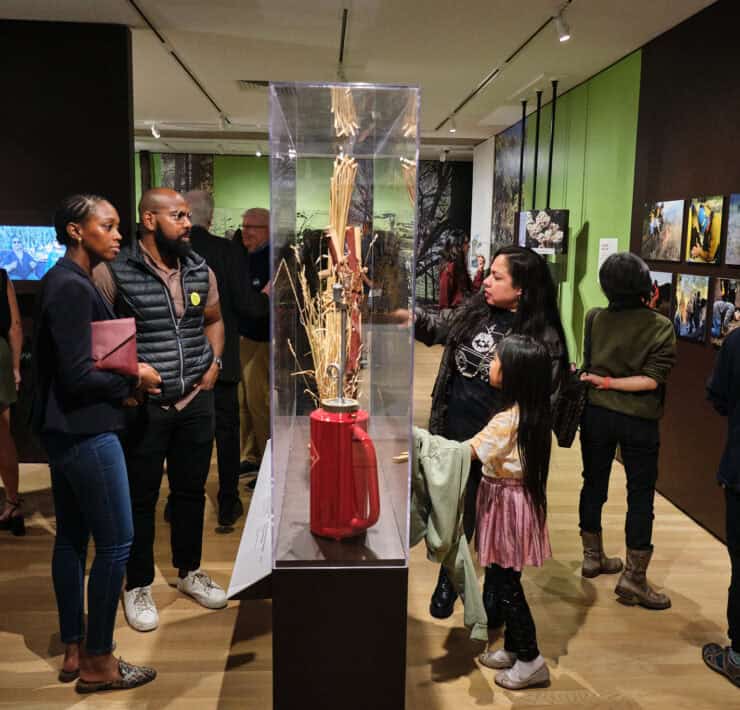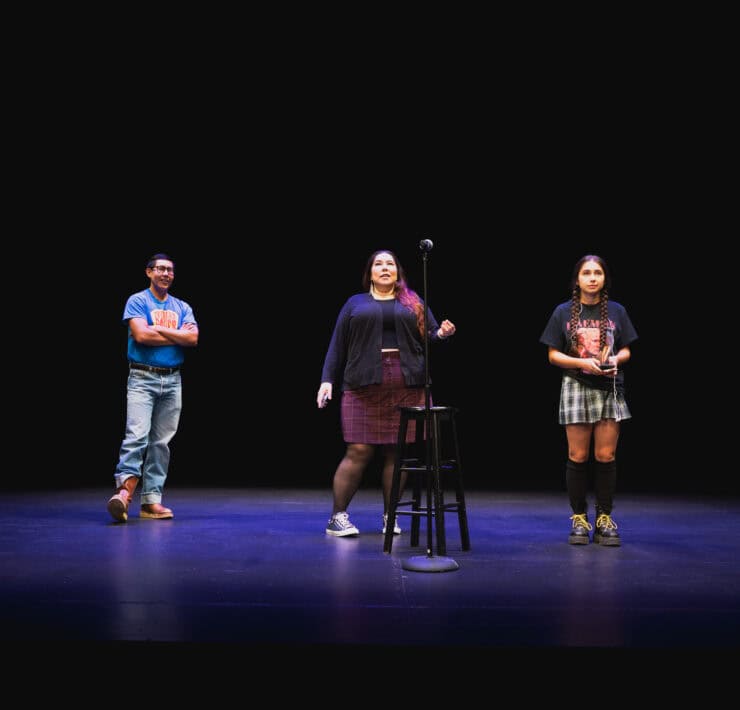
by Tavi Lorelle Carpenter
Casey Pederson, a Karuk and Yurok tribal member living on the coast of Northern California, was a marketing student at Cal Poly Humboldt when a doodle inspired him to continue his journey of becoming a phenomenal artist. Casey’s work combines traditional designs with modern technology, utilizing his graphic design skills to create an altogether new art form.
“We’re very fortunate up here where I am, we’re still very intact with our culture. And I’m very fortunate, art and history is very big where I’m from, I grew up around many artists around here locally.”
Though he admits, he never thought that one day he’d be an artist.
“I never really thought I’d be an artist when I was growing up, I had really bad handwriting.”
But Casey’s marketing major introduced him to Illustrator, a graphic design tool that allows him to overcome any bad handwriting issues to create dynamic, expressive artwork.
And it all started with a doodle.
“One of my marketing classes, we kind of jumped into designing and using Illustrator. I just started playing around because I was bored one day and started making tribal designs and I kept expanding on what I knew and what I’ve been taught through my teaching with ceremony. One Day, I came up with a little doodle and I was like, wow, I actually kind of really like this.”
He shared his piece on social media and received positive feedback encouraging him to keep going. But he also notes that there are a lot of people that have encouraged and inspired him along his journey as well, including his late great-cousin Brian Tripp, his uncle Alme Allen, Frank Tuttle, Lyn Risling, Julian Lang and many others.
Casey’s process is actually quite unique, he doesn’t really pre-plan his pieces.
“I never sketch, there’s never a sketch going into it. I like to run. And when I run, I kind of think of different ideas. Then, [once in the application] I just start playing with it. There’s no set final thing. I’ll have a rough idea in my head, but it’s never a sketch, never a layout or anything like that. I go in and play around with it and see where it goes from there. I’ll have a rough idea, but nothing is ever set [in] concrete.”
Casey is drawing from traditional designs, expanding on what they could be. Something he was inspired to do by his mentors, but also the world around him. He explained to me how his connection to community has acted as a supportive factor in his artistic expression.
“I think a lot of it has to do with how ingrained you still are with our homeland and our ceremony, where we can pull from that. I can still go to a village that my family originated from, and we hold ceremony there, and that’s something that I take a lot of pride [in], and [it] inspires me a lot with my work today.”
But it is also deeply connected to identity.
“These designs represent us as people. And so they get passed on, passed on, and passed on. And so it’s a way of identifying us. And when you look at that certain design you know that [it’s] from Northern California.”
One exceptional standout piece, Casey wanted to be sure we shared is entitled “Home Back”, drawing inspiration from the #LandBack movement. The artwork features a background of meticulously arranged frog foot basket pattern in a soft taupe, set against a warm sandy hue. At the forefront, sits a classic plank house rendered in black, underneath sits the words: “Home Land Back”. The message, resembling brushstrokes, seamlessly incorporates more basket patterns accompanying the letters and statement. The entire composition is enclosed in a frame reminiscent of painting with dry-brush dipped in black.

“[“Home Back”] is a take I wanted to do on the ‘Land Back’ movement we have going on. I love what the movement is doing and the conversations it is starting, I just wanted to add a personal touch to it for this piece. The piece features a drawing of one of our traditional redwood plank homes our people lived in. ‘Land’ is important, [but] it is more than just that to us Native people. It is our home that was stolen from us. A piece of us was taken and it is something we deal with and are reminded of every single day of what was stolen from our people. The way I laid out the words HOME LAND BACK is meant to be interrupted in a few different ways, it could be read as ‘Home Land Back’ or just simply ‘Home Back’, both telling the message I want to tell. Above the words is what our people recognize as our home, our Plank Houses.”
I asked Casey what he hoped his art expressed to his viewers, he told me there were two things that were really important to him
“I view it in two lights, the indigenous side of viewing it, where it’s you know, my people. I like to think that it inspires creativity for other artists and really signifies that we’re still here, we still practice our culture, we’re still able to do what we do, and that’s art. Then, from a non-indigenous side, it’s a little similar, but in a different light. It’s that [our] people are still here. [Our] practices are strong.”
It also ties back to the potential art has for being a healing tool for community as it is a form of keeping culture alive. The inclusion of traditional designs within new forms of creative expression is a means of celebrating culture with pride. Casey reflected on the impact art can have for community by noting how it is also a tool of combatting colonialism.
“We have so much healing we have to do. That’s a daily battle for us, battling this generational trauma. And for a long time we were taught not to love who we are and that’s something that still gets passed on to generations, unfortunately. And so in one aspect, I like to think of [art] as a pillar of being able to identify and love who we are and heal. And this is passed on from generation to generation, these designs. And so I like to think of that as combating the way we were colonized and [forced] to not practice our culture. [Art] is a form of keeping it alive.”
When it comes to advice to other indigenous artists, Casey encourages bravery and exploration.
“Don’t be afraid to experiment. Try out everything, see what works, and don’t be afraid of failing. You are making an effort to collaborate with your people to keep that culture alive. That’s the biggest thing right there, trying.”
To support Casey, you can give him a follow on Instagram and Facebook! You can also support him by visiting his online store, Costal Ndn Art, where he sells not only paper and canvas prints but hoodies, shirts, stickers, phone cases and cute totes!
Follow Casey on Facebook & Instagram:
https://www.instagram.com/coastalndnart/
https://www.facebook.com/people/Coastal-NDN-Art/100087564259355/
Or visit his store Costal Ndn Art: https://coastalndnart.com/









